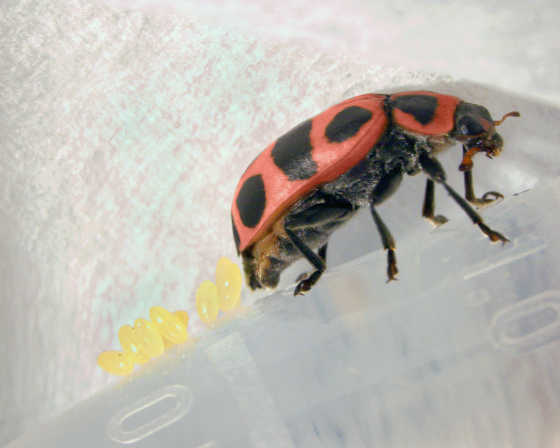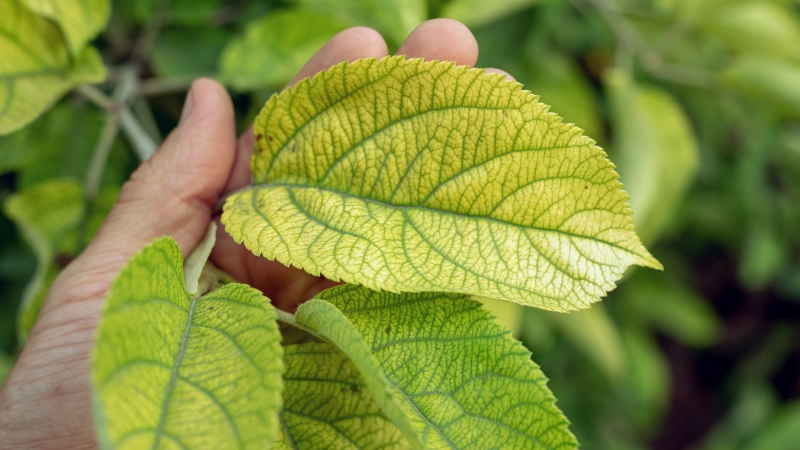New Egg Cage System Could Increase Ladybug’s Biocontrol Prospects
A specialized insect cage system developed by USDA scientists could improve the prospects of mass rearing the pink spotted lady beetle, an insect that could then be used to biologically control aphids, spider mites and other crop-damaging pests.

A cage system newly invented by ARS scientists may allow mass rearing of the native pink spotted lady beetle so they could be used to biologically control aphids, spider mites and other plant pests. Photo credit: USDA-ARS
Native to the United States, the pink spotted lady beetle (Coleomegilla maculata) is a generalist predator that hunts for prey in many economically important crops, including wheat, corn, cotton, alfalfa, soybean, pea, and tomato. Unlike the Asian spotted lady beetle (Harmonia axyridis), a non-native competitor, the pink spotted lady beetle doesn’t invade homes during the winter so it doesn’t become a nuisance. However, there’s been no easy way to rear large numbers of the lady beetle for sale to growers seeking to release them as biocontrol agents.
Now, a solution is at hand in the form of a cage system that includes a jar-shaped repository, a mesh lid and several strips where captive female pink spotted lady beetles can lay masses of tiny orange eggs. Removing the strips allows the eggs to be harvested without being damaged in the process, notes ARS entomologist Meg Allen, with USDA’s Agricultural Research Service (ARS).
Allen uses the eggs in research to genetically analyze different life stages of lab-reared colonies of pink spotted lady beetle that she keeps. However, the new system for safely collecting the eggs could also be adopted for use by commercial insectaries as well as with different species, according to Allen, at the ARS Biological Control of Pests Research Unit in Stoneville, Mississippi.
She devised the system based on both her need for a study supply of ladybug DNA and the insect’s egg-laying behavior. For example, she chose textured strips instead of smooth ones to use inside the repository based on the females’ preference (in nature) for plants with tiny surface hairs, called trichomes.
For her studies, Allen used a six-jar system that housed 10-20 female ladybugs each and enabled the collection of eggs at the rate of a couple hundred to a few thousand per day. A paper on the advance was published in the January 2012 issue of Psyche: A Journal of Entomology.
Source: USDA-ARS news release









